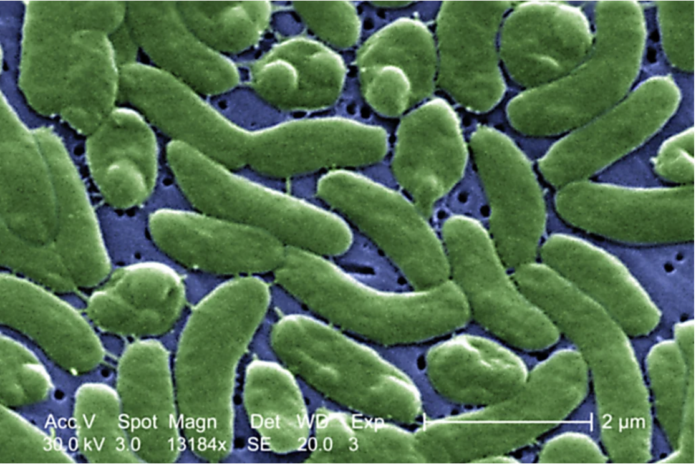
By Aryaman Chutke
Yes…FLESH-EATING bacteria, you read right, and yes, YOU dear reader, YOU could have flesh-eating bacteria, GORGING itself on your innards, as you read this. Not really, unless that is, you have somehow frequently been taking dips in warm coastal areas or ponds or have been enjoying undercooked contaminated seafood. You see, this specific flesh-eating bacteria otherwise referred to as Vibrio Vulnificus particularly favors warm salty, or brackish water and as the name suggests also has a peculiar taste for flesh, more specifically it causes necrotizing fasciitis, for those who don’t know what that means, it’s a type of rare, lethal case of bacterial infection in which fascia tissue is inflamed and necrosed (killed) along with other underlying tissues, in this case, caused by the breakdown and attack on the tissue by the bacteria which would use it for their sustenance. Why is this relevant you may ask? You may have heard of the recent category 4 hurricane Ian which struck the southeastern U.S. last month leaving coastal areas of Florida in a puddle…a puddle which was sourced from relatively warm salty ocean water; perfect conditions for flesh-eating bacteria to thrive. As you can imagine this consequently led to a surge in infections by the Vibrio Vulnificus bacterium, with roughly 20% ending in mortality. The bacteria invades the body through opening in the skin such as cuts and can cause the following symptoms: fever, blistering skin lesions, and redness pain and swelling fluid leakage at the sit of infection and possibly endotoxic shock, leading to death.
Signs in Florida placed after hurricane Ian, cautioning civilians of the flesh-eating bacteria.
Scource: Matza, M. (2022, October 18). Florida flesh-eating illness cases Spike after Hurricane Ian. BBC News. Retrieved October 22, 2022, from https://www.bbc.com/news/world-us-canada-63309246
V. Vulnficus accounts for around 95% of seafood related deaths with a significantly higher mortality rate than Salmonella or E. Coli. A review of 495 cases throughout
the U.S. by the FDA from 1992 to 2007 reveals a mortality rate of 51.6%. More so 85.6% of the cases were male, due in part to an association between estrogen and protection from the bacteria’s LPS endotoxin. In 180 cases reviewed by the FDA from 2002 to 2007 associates higher risk of infection from the consumption of raw oysters which is evident in 92.8% of the patients. There was also an association with having preexisting conditions, especially liver disease, evident in 95.3% of cases. Shell fish such as raw oysters and clam are a very common carrier of the bacteria due to the peculiar way in which they feed, in which they intake water containing small particles such as plankton and filter them from the water for consumption. Among the particulates filtered is the bacteria which builds up in concentration, due to this filtering, in the shell fish. So pro tip: avoid frequently indulging in the consumption of raw shell fish. As for the association with pre existing liver conditions, there is a cause: liver dysfunction usually leads to an unusually high build up of iron in your blood, which is critical for the survival and flourishing of the bacteria.
